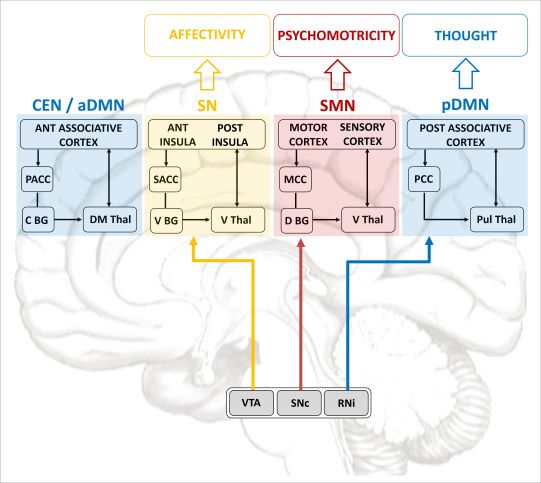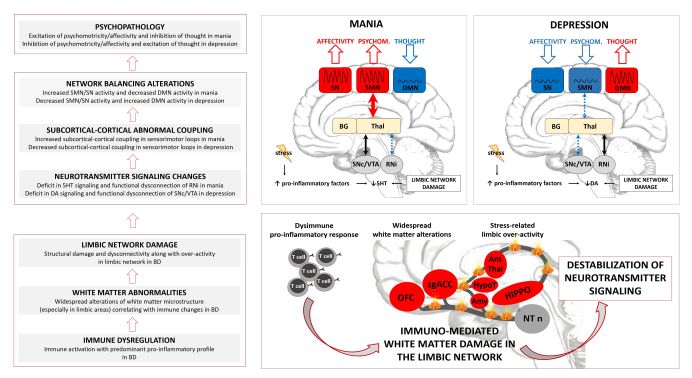
Matteo Martino
6620-2589 #10522
- Brain functioning and phenomenology/behavior
- Psychiatric disorders (bipolar disorder)
- Consciousness
PSYCHIATRIC NEUROSCIENCE LAB Our lab investigates the relationship of brain functioning with phenomenal experience and behavior in physiology and psychopathology.
My academic training and research experience have provided me with a background in psychiatry and neuroscience. After graduating from medical school and specializing in psychiatry (University of Genoa, Italy), I obtained my PhD degree in neuroscience (University of Genoa, Italy) and two postgraduate master degrees, one in clinics and treatment of mood disorders (University of Pisa, Italy) and the other in affective neuroscience (Maastricht University, Netherlands). I also spent several periods of training and research work at various international research centers as visiting researcher, including the Mind Brain Imaging and Neuroethics center (University of Ottawa, Canada), Icahn School of Medicine at Mount Sinai (New York, U.S.), Research Center for Brain and Consciousness (Taipei Medical University, Taiwan), and Mental Health Centre and Psychiatric Laboratory (Sichuan University, Chengdu, China). Then, I worked at the Icahn School of Medicine at Mount Sinai (New York, U.S.) as a postdoctoral fellow. Finally, I joined the Graduate Institute of Mind Brain and Consciousness at Taipei Medical University as an assistant professor.
My research focuses on the relationship of brain functioning with phenomenal experience and behavior, as well as the investigation of the psychopathology and pathophysiology of major psychiatric disorders, bipolar disorder especially. These research areas are complementary in psychiatric neuroscience, since a better understanding of brain physiology is fundamental for the study of brain alterations, while the investigation of the neurobiology of psychiatric disorders may provide valuable insights for a better comprehension of how the brain works. In this regard, bipolar disorder represents a unique model to investigate how the extreme and opposite changes in phenomenal and behavioral patterns during its manic and depressive phases are related to corresponding changes in brain functioning.
My research work is conducted in strict collaboration with Dr. Paola Magioncalda. We investigate the relationships between psychopathology, functional architecture of intrinsic brain activity, and neurotransmitter signaling. Moreover, we investigate how functional brain changes can be traced to structural brain alteration and its potential immune-inflammatory basis in bipolar disorder. Based on our work, we are currently implementing a working model of the relationship between brain functioning and phenomenal/behavioral patterns, as well as a unified model of the pathophysiology of bipolar disorder.
1.Martino M and Magioncalda P. Tracing the psychopathology of bipolar disorder to the functional architecture of intrinsic brain activity and its neurotransmitter modulation: a three-dimensional model. Molecular Psychiatry. 2022
2.Magioncalda P and Martino M. A unified model of the pathophysiology of bipolar disorder. Molecular Psychiatry. 2022

Three-dimensional model of brain functioning and phenomenal-behavioral dimensions. Abbreviations: SMN, sensorimotor network; SN, salience network; aDMN, anterior default-mode network; pDMN, posterior default-mode network; CEN, central executive network; PACC, perigenual anterior cingulate cortex; SACC, supragenual anterior cingulate cortex; MCC, middle cingulate cortex; PCC, posterior cingulate cortex; C BG, central basal ganglia; V BG, ventral basal ganglia; D BG, dorsal basal ganglia; DM Thal, dorsomedial nucleus of thalamus; V Thal, ventral nuclei of thalamus; Pul Thal, pulvinar nucleus of thalamus; VTA, ventral tegmental area; SNc, substantia nigra; RNi, raphe nuclei.

Unified model of the pathophysiology of bipolar disorder. Damage in the limbic network and alteration of neurotransmitter signaling (lower part). According to the model, the core pathophysiological mechanism in BD could be traceable to an immune-mediated white matter alteration resulting in a limbic network damage, which destabilizes the neurotransmitter signaling increasing its susceptibility to perturbations. Functional reconfiguration of intrinsic brain activity and psychopathology (upper part). Changes in neurotransmitter signaling (triggered by heterogeneous stressors and inflammatory states onto a damaged limbic network) may then lead to phasic reconfigurations of intrinsic brain activity, from abnormal subcortical-cortical coupling to changes in network balancing. Finally, this may clinically manifest in the psychopathological alterations of mania and depression. Abbreviations: BD, bipolar disorder; OFC, orbitofrontal cortex; sgACC, subgenual anterior cingulate cortex; Amy, amygdala; HypoT, hypothalamus; Ant Thal, anterior nuclei of thalamus; HIPPO, hippocampus; NT n, neurotransmitter-related nuclei; DA, dopamine; 5HT, serotonin; SNc/VTA, substantia nigra/ventral tegmental area; RNi, raphe nuclei; BG, basal ganglia; Thal, thalamus; SN, salience network; SMN, sensorimotor network; DMN, default-mode network
For more information on my ongoing projects please see here. For the complete list of my published work, please see My Bibliography https://www.ncbi.nlm.nih.gov/myncbi/matteo.martino.1/bibliography/public/



